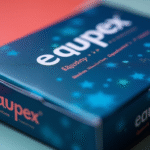Background on the Martian “Face” Feature
The University of Arizona has released an image of one of the most famous examples of a “mimetite” on Mars, revisited from space using the HiRISE camera aboard NASA’s MRO (Mars Reconnaissance Orbiter).
This particular mesas gained notoriety after a Viking 1 image captured it on July 25, 1976. The shadows cast upon it created a pareidolia effect, making observers perceive a human-like face.
Nature of the Martian “Face” Feature
The “face” is a pattern formed by rocks that can resemble recognizable shapes through random formation, weathering, and erosion processes.
Mesas like this are common in the Cydonia region, where southern highlands with abundant craters transition into northern lowlands. Many middle-latitude locations have also experienced glacial activity, likely reducing the mesa’s size and creating narrow valleys around its highest level. The smooth material patches, especially on its east and north faces, are likely remnants of fine water ice.
HiRISE’s Contribution to Understanding the Martian “Face”
Two stereo images of this mesa, taken by HiRISE on November 4, 2023, were converted into a digital terrain model (DTM).
HiRISE DTMs are created from two images of the same terrestrial area, taken from different angles and orbits. They provide valuable data not only for researchers but also for visualizing the terrain, as explained on the blog dedicated to this camera operated by the University of Arizona.
Recreating the Viking 1 Image Conditions
Using the DTM, we can recreate the shadows of the original Viking 1 image from 1976. By modeling the sun’s angle as it would have appeared on July 25, 1976, throughout the day, the mimetite features only emerge when the illumination is minimal, just before sunset.
Key Questions and Answers
- What is the Martian “Face” feature? It’s a pattern formed by rocks that resemble recognizable shapes due to random formation, weathering, and erosion processes.
- Why is this mesa significant? It gained notoriety after a Viking 1 image captured it in 1976, creating a human-like face illusion due to shadows.
- What role does HiRISE play in understanding this feature? HiRISE captured stereo images that were converted into a digital terrain model (DTM), providing valuable data for visualizing and studying the mesa.
- How does the DTM help us understand the original Viking 1 image? Using the DTM, we can recreate the shadows of the original Viking 1 image from 1976, revealing the mimetite features when illumination is minimal, just before sunset.






